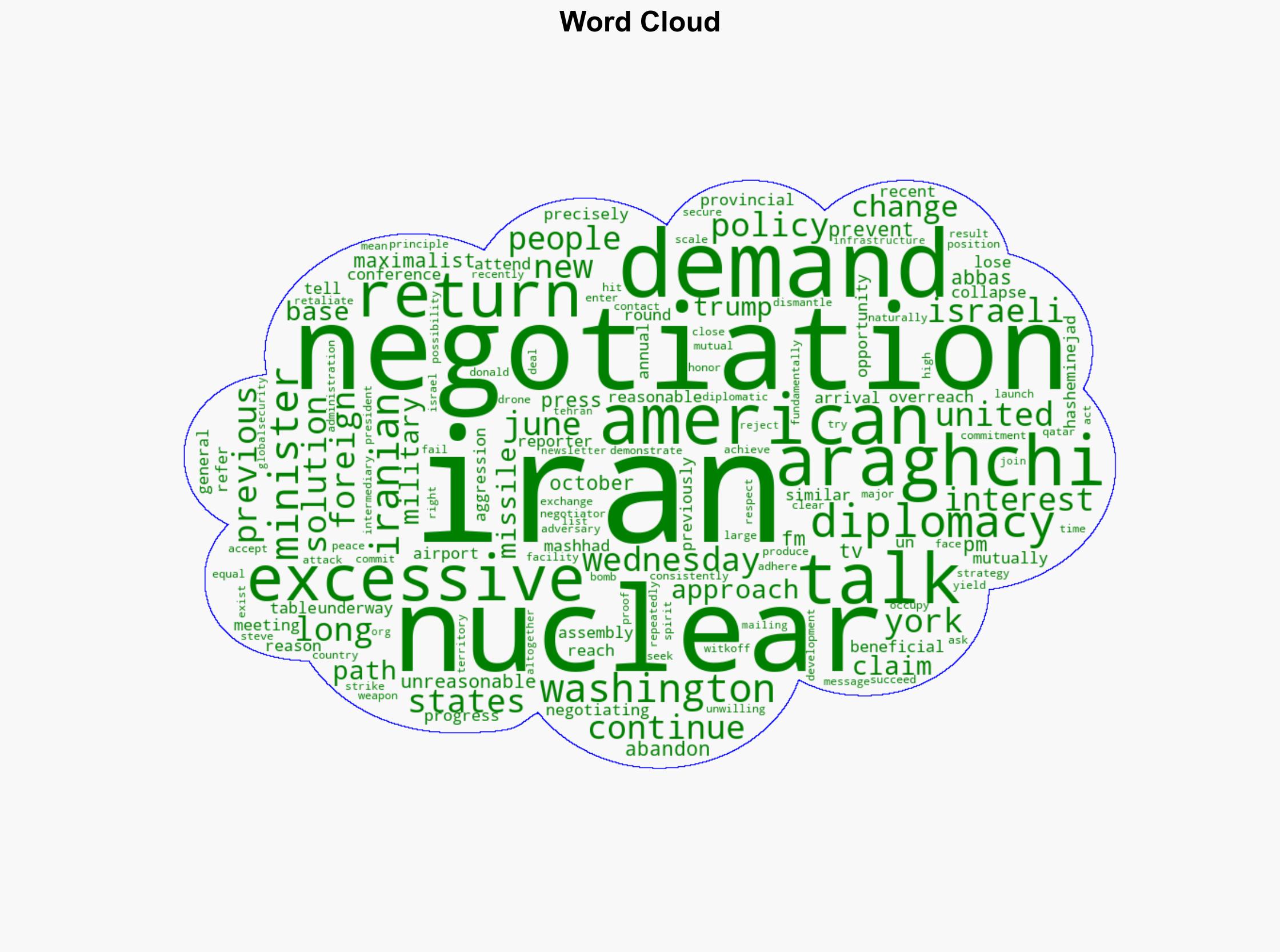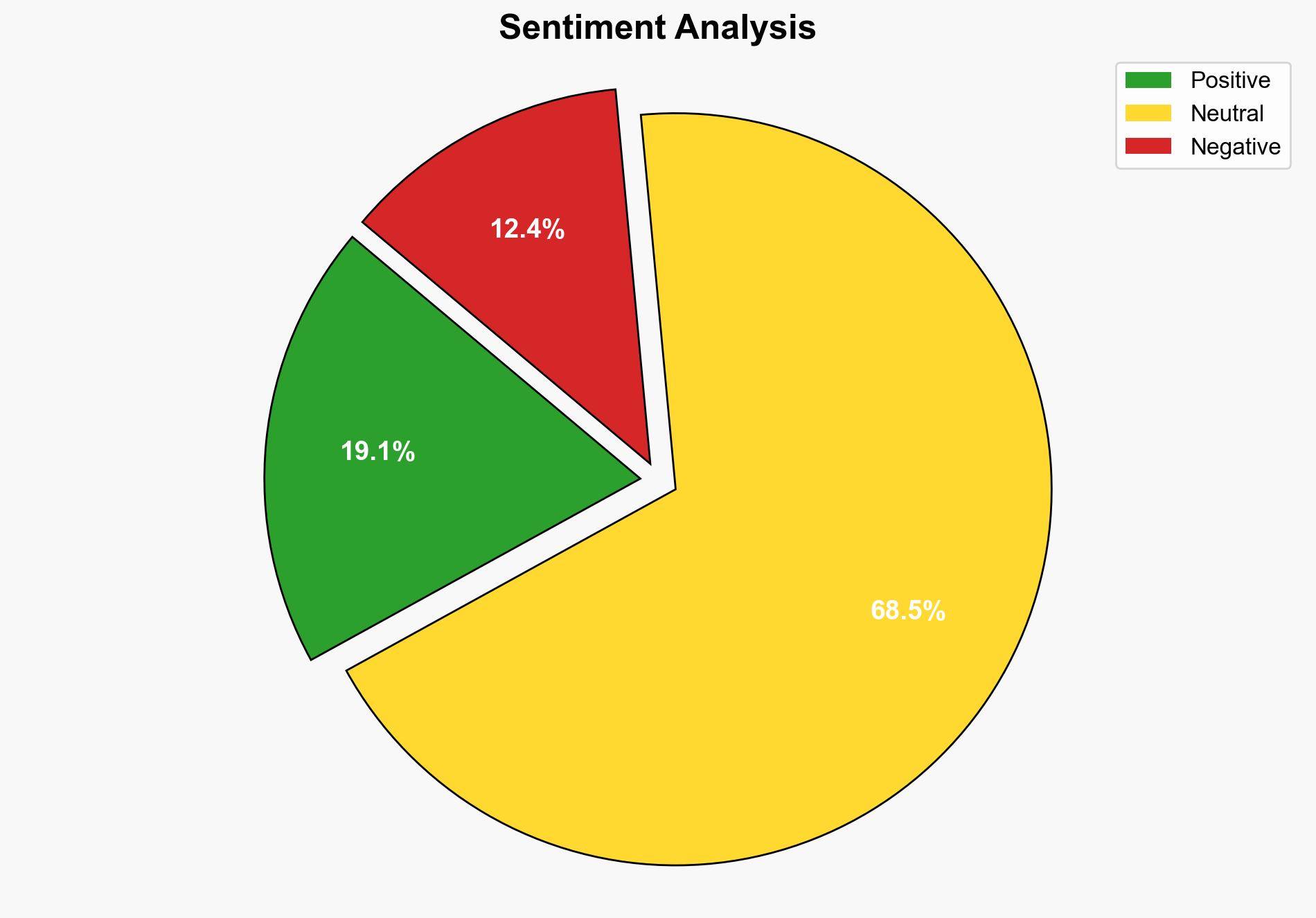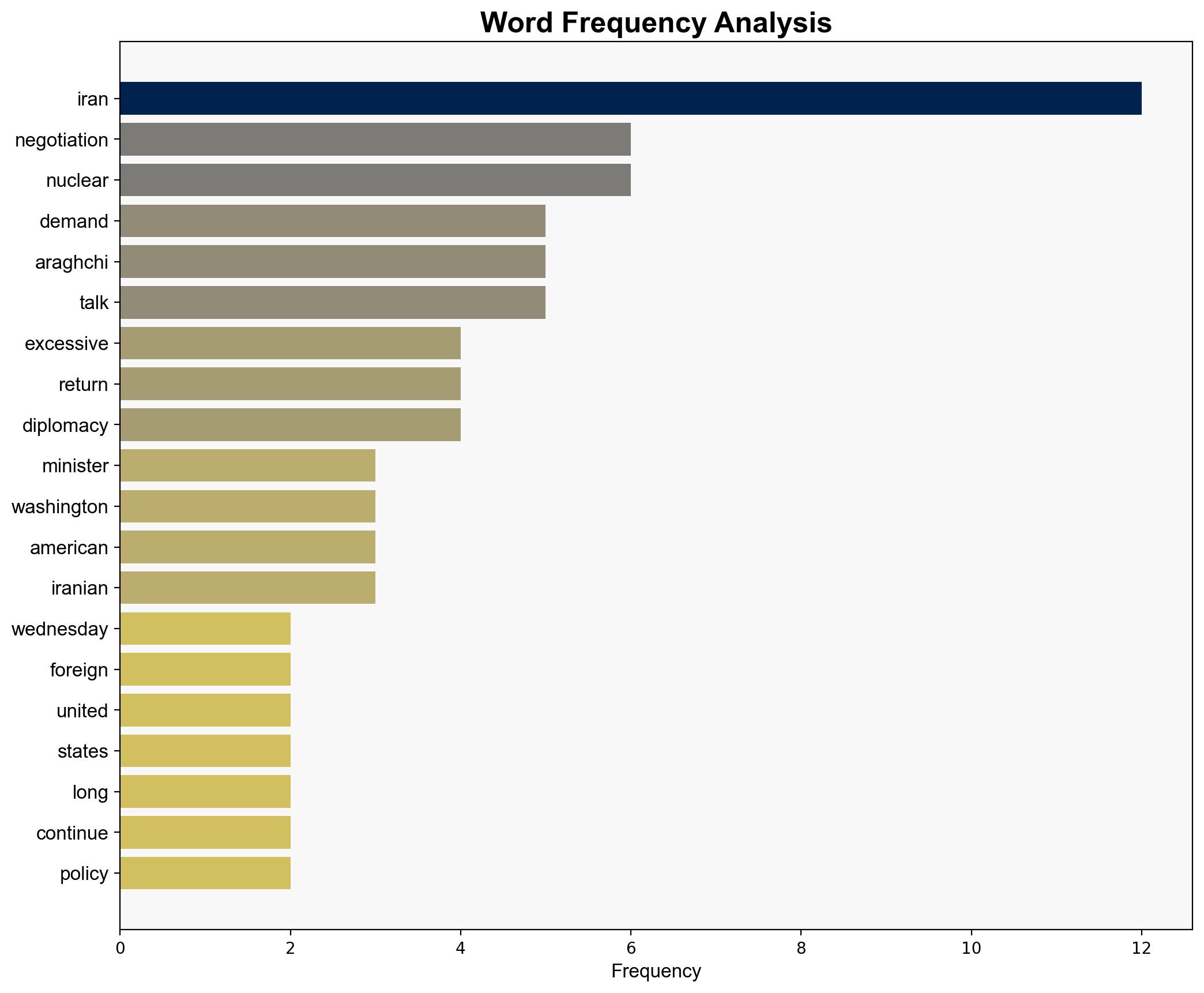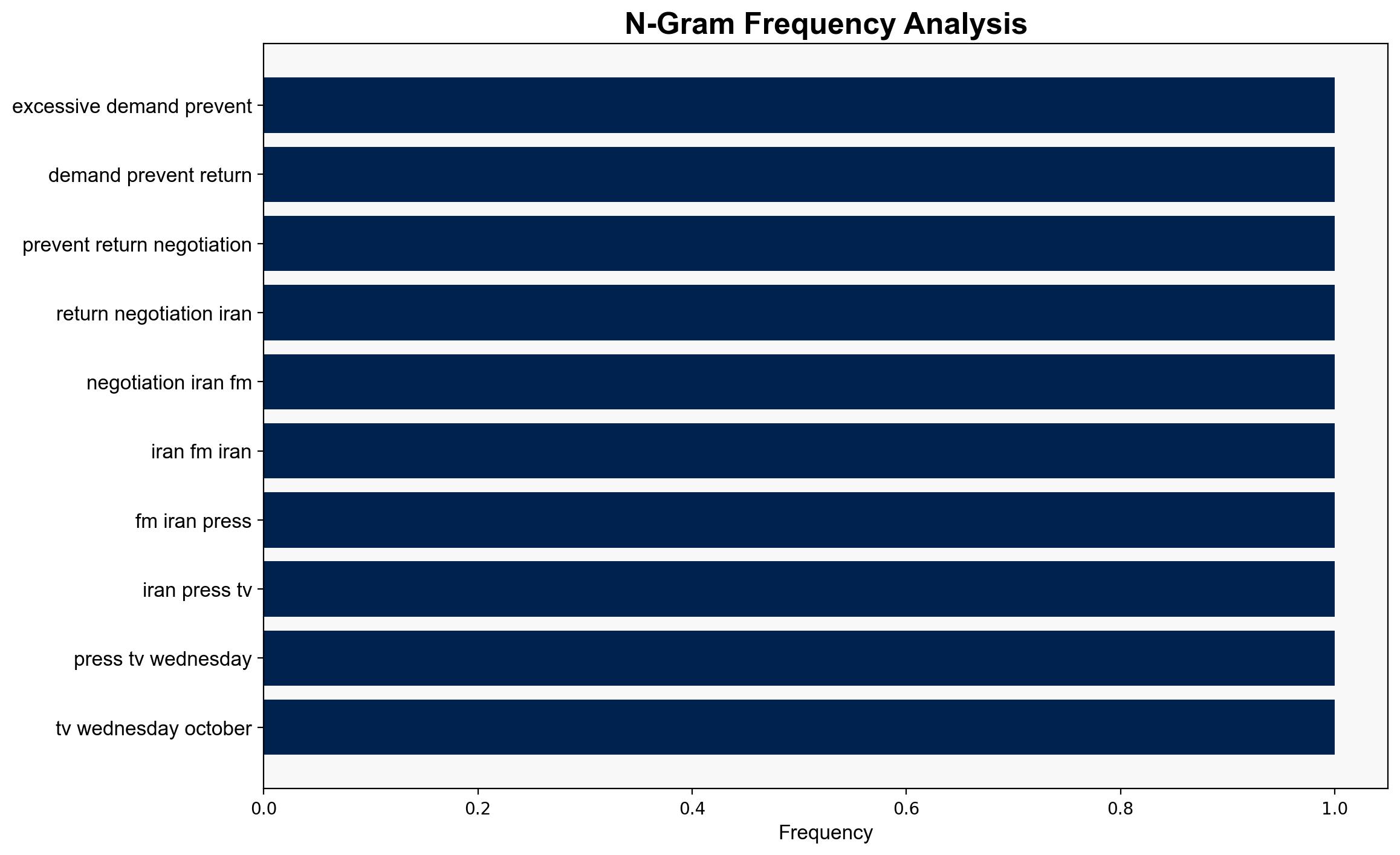Excessive US demands prevent return to negotiations Iran FM – Globalsecurity.org
Published on: 2025-10-23
Intelligence Report: Excessive US demands prevent return to negotiations Iran FM – Globalsecurity.org
1. BLUF (Bottom Line Up Front)
The most supported hypothesis is that the United States’ demands are intentionally maximalist to exert pressure on Iran, rather than to genuinely facilitate negotiations. Confidence in this hypothesis is moderate due to the lack of transparency in diplomatic communications. It is recommended to explore alternative diplomatic channels and backchannel communications to reduce tensions and reinitiate negotiations.
2. Competing Hypotheses
1. **Hypothesis A**: The United States is employing excessive demands as a strategic pressure tactic to compel Iran into concessions, without an immediate intent to return to negotiations.
2. **Hypothesis B**: The United States genuinely seeks to negotiate but misjudges Iran’s willingness to engage under current conditions, leading to a stalemate.
Using ACH 2.0, Hypothesis A is better supported by the pattern of past US negotiation strategies and the lack of progress in talks, despite ongoing communication efforts. Hypothesis B is less supported due to Iran’s consistent rejection of the demands and the historical context of US-Iran negotiations.
3. Key Assumptions and Red Flags
– **Assumptions**: It is assumed that the US demands are perceived as excessive by Iran, and that Iran’s public statements reflect its true negotiation stance.
– **Red Flags**: Potential cognitive bias includes confirmation bias in interpreting Iran’s statements as definitive. Deception indicators may include Iran’s public rhetoric differing from private diplomatic communications.
– **Inconsistent Data**: Lack of detailed information on the specific demands made by the US and Iran’s private responses.
4. Implications and Strategic Risks
– **Geopolitical Risks**: Continued stalemate could lead to increased regional instability, particularly if military actions escalate between Iran and US allies.
– **Economic Risks**: Prolonged tensions may impact global oil markets and economic sanctions could further strain Iran’s economy.
– **Cyber and Psychological Dimensions**: Potential for increased cyber operations by both parties as a form of non-conventional warfare, alongside psychological operations to influence public perception.
5. Recommendations and Outlook
- Initiate backchannel communications to gauge Iran’s true negotiation position and willingness to compromise.
- Consider revising negotiation strategies to include phased concessions that could build trust incrementally.
- Scenario Projections:
- **Best Case**: Successful renegotiation leading to a new agreement, reducing regional tensions.
- **Worst Case**: Escalation into military conflict, destabilizing the region further.
- **Most Likely**: Continued diplomatic stalemate with intermittent escalations in rhetoric and minor skirmishes.
6. Key Individuals and Entities
– Abbas Araghchi
– Steve Witkoff
– Donald Trump
7. Thematic Tags
national security threats, geopolitical strategy, US-Iran relations, negotiation tactics




